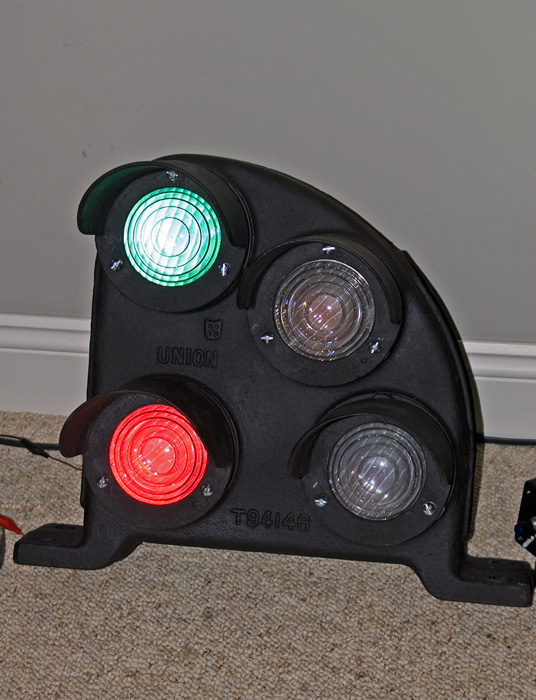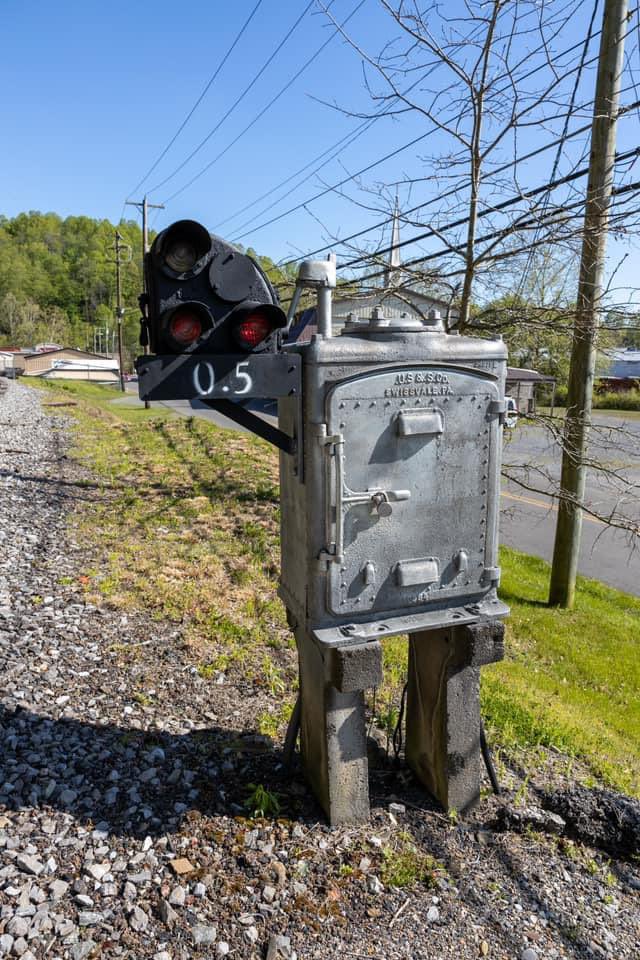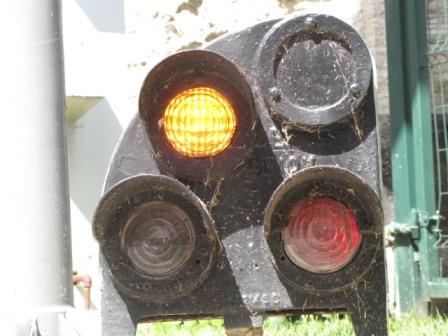We all learn about traffic lights in elementary school. Red means stop, green means go and yellow means slow or caution. These are the basics of automatic block signaling that also tend to get taught in entry level railroading books. Now its pretty logical that a signal might lack the ability to display a clear indication. A permanent stop condition or the end of automatic block territory are both situations where a Clear signal would not ever apply. However there are a few situations where signals in North America can display Stop or Clear, but not Approach on the full speed head.
The first is at interlockings outside of automatic block territory like a diamond crossing or drawbridge. The signal provides movement authority through the interlocking and without track circuits outside of the interlocking limits there is no "prepare to stop" points an Approach type signal would apply to. Trains will have their own movement authority like a track warrant so a clear signal is basically the interlocking telling the train "you do you". One might expect signals in this case to display a Restricting indication, instead of a clear, and sometimes they do, but that is going to come with a 20mph speed restriction, or less, which can be a time hit on unsignaled lines with higher track speeds.
The next situation, Manual Block territory, would be very familiar to those in other parts of the world. Although almost extinct in the US, there remains a bit of manual block still in service on the LIRR and the way to identify a manual block signal is the lack of an approach indication. (This also applies in general to historic PRR signaling charts.) Signals will display Stop or Clear Block with any Approach functionality handled by a separate distant signal towards the end of the manual block. The PRR even went one further sometimes substituting the \ "Caution" indication in place of / Approach.
Sometimes its really not good to have locomotives stopped and waiting at a specific signal, Maybe there's an issue with a grade crossing, or noise, or diesel exhaust. In this case it would not be desirable for trains to approach that signal prepared to stop, so a preceding signal will either hold trains short or allow them to approach a signal with some sort of proceed indication. The most notable of these is at the entrance to Washington Union Stations 1st St tunnel that the currently diesel hauled northbound trains cannot enter without having a signal displayed further on that allows them to leave said tunnel. Another nearby signal location at CSX's LENFANT interlocking might lack southbound approach signals for a similar reason due to an overbuild.
One somewhat PRR-specific situation is where interlockings are provided with exit signals and because of the short distance between the interlocking's entrance signal and exit signal, Slow Approach is used instead of Approach. This creates an upper head that can only display --- Stop or | Clear. The C&O also made frequent use of exit signals, but seemed to keep their upper head Approach indication, although Medium Clear to exit Approach allowed the C&O to minimize the use of R/Y/Y/ Medium Clear.
A fairly new situation where Approach has been "omitted" involves high speed turnouts. At certain points on the NEC, Amtrak has decided to combine a flashing green "Cab Speed" signal indication with R/*Y* Medium Approach. At the end of a main track that converges into another via a high speed turnout, the result will be an upper head with green and red lamps/positions and no yellow lamp/position.


















































